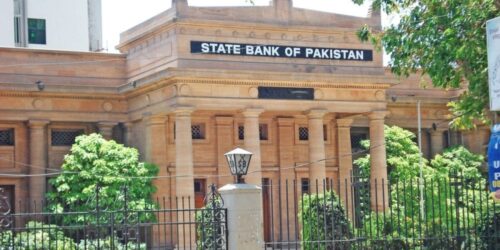State Bank of Pakistan’s (SBP’s) annual report on Pakistan’s economy 2020-21 claims that growth rebounded to 3.9 percent last fiscal year accompanied by a 10-year low current account deficit that built up foreign exchange reserves, an edging down of fiscal deficit despite Covid-19 leading to improved debt-to-GDP ratio and easing of consumer price index due to stable core inflation constituting non-food and non-energy prices.
The growth rate doubled from the projected 2 percent last fiscal year with current account deficit projected at negative 1.2 percent of GDP and this was on the back of four positive trends: (i) remittance inflows peaked at over 29 billion dollars partly attributable to the cessation of hundi/hawala due to a global lockdown, partly to meet the rising domestic inflationary pressures of families of remitters and partly due to the incentives on offer by SBP to remit through the official channels; (ii) large-scale manufacturing growth picked up last year registering 14.8 percent July-June, which in turn also fuelled exports, though this was on the back of negative growth in 2019-20 due to severe contractionary monetary and fiscal policies implemented in 2019-20 as agreed with the International Monetary Fund (IMF) under the ongoing Extended Fund Facility programme; additionally, higher growth last year is on the back of easing of these harsh policies post-pandemic, including tax amnesty to the construction sector and higher domestic consumption levels as suppressed demand resurfaced after the end of the lockdown which was initially met with inventories; (iii) exports rose though perhaps the impact of a depreciating rupee claimed as one contributory factor in the report was minimal, if any, as the link between Pakistan’s traditional export items and a rupee depreciation remains un-established by any empirical study. In spite of the depreciating rupee, imports began to rise which, the report correctly argues, is attributable to a surge in economic activity.
However, the usual growth syndrome in Pakistan was witnessed when the trade deficit began to widen which was cited as the reason for raising the discount rate in the 19 November 2021 Monetary Policy Statement; and (iv) fiscal deficit was estimated at negative 7.1 percent in 2020-21 by the Finance Division against 8.1 percent in 2019-20 and while this indicates a significant reduction of one percent yet a deficit of negative 7.1 percent is far from being sustainable. And concerning is the fact that this decline can be sourced to a slash in the Public Sector Development Programme – another prime contributor to growth in the country.
The items that should be a source of serious concern to Pakistani authorities were threefold. First, reliance on external financing was 895,510 million rupees in 2019-20 rising to 1.338 trillion rupees in 2020-21 – an increase of 49 percent last year.
Second, the report highlights the rise in crop productivity in 2020-21 compared to the year before in spite of a dip in cotton output; however, the rise in food imports as well as cotton would erode the positivity associated with this claim. And finally, foreign exchange reserves rose by 5.2 billion dollars on the back of higher remittance inflows and export receipts however 50 percent of the reserves continued to be sourced to borrowing – swap arrangements as well as debt equity through issuance of sukuk and Eurobonds.
The incumbent government negotiated an IMF programme that is held to be responsible for not only the implementation of severe contractionary monetary policy (a discount rate well above the global average based on the rationale that our inflation is a lot higher than in the rest of the world and an exchange rate that would make our imports unattractive though imports continue to rise unabated relative to exports) and fiscal policies (ending exemptions likely to be passed onto the consumers, widening the tax net that has yet to be implemented, raising tariffs on utilities which would further fuel inflation as well as a pledge to raise petroleum levy by 4 rupees per litre till the 30 rupee per litre limit allowable under the law is reached) – policies in abeyance during the pandemic and expected to be reinstated soon as prior conditions of the sixth review begin to be implemented. It, therefore, increasingly appears that the economic team managers have agreed to re-embark on a stabilisation policy programme at present and not push the growth objective in the current year because failure to comply with the IMF’s prior conditions would possibly imply no disbursement of the next one billion dollar tranche which, in turn, would freeze other multilateral and bilateral assistance.






